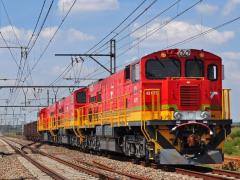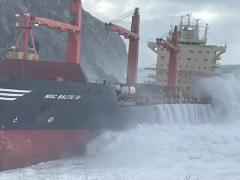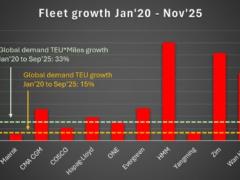The unprecedented order for over 100 feeder vessels by Mediterranean Shipping Company, totalling approximately 300 000 TEU, comes despite industry-wide overcapacity, currently estimated at 18-20%, and raises questions about the logic behind the procurement.
Traditionally, shipping economics cautions against expanding capacity when the market is already saturated, as this tends to depress freight rates and profitability.
Yet MSC's aggressive expansion suggests a strategy that goes beyond conventional market optimisation.
Industry analysts offer differing perspectives.
Global consulting firm AlixPartners says that MSC has been the most aggressive carrier in fleet expansion, growing its fleet by 12% in 2024, well above peer averages.
They suggest this indicates a strong growth play rather than a purely defensive response to market conditions.
Maritime Strategies International highlights the pressing need for new feeder tonnage, citing that many existing vessels are over 20 years old.
This structural demand, coupled with shifts in trade patterns, particularly in regional routes, supports the view that fleet renewal is a significant factor in MSC's decision.
Experts such as Baack from the Maritime Ports and Container Council also point to geopolitical considerations, noting that smaller, more flexible vessels are increasingly valuable in an uncertain global trade environment.
Italian think-tank ISPI frames MSC's expansion as a strategic move to hedge against potential trade disruptions.
However, cautionary notes remain.
Analysts from GCaptain and Braemar warn that the container ship orderbook is at a 15-year high, and the influx of new vessels could exacerbate overcapacity, potentially affecting freight rates.
Global law firm HFW also emphasises the need for robust capacity management in the face of these developments.
While fleet renewal and structural demand are clear motivators, MSC's bold procurement hints at a broader strategic objective. Whether this is primarily commercial, geopolitical, or a combination of both, the move is reshaping perceptions of risk and opportunity in the global shipping market.
Industry observers will be watching closely to see how this expansion affects trade flows, freight rates, and competitive dynamics in the coming years.













